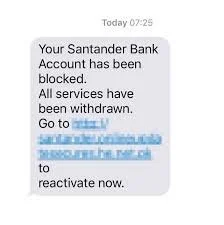My name is Errol. I’m the founder of SantanderMyFraudClaim.Com a weekly blog that provides insight into the dark reality of banking.
I’m currently working on my next blogpost.
“But if you want to continue to be slaves of the banks and pay the cost of your own slavery, then let bankers continue to create money and control credit.”
~ Josiah Charles Stamp, 1st Baron Stamp
Director Bank of England
I learned the polite math of business, then realized the real formula is simple: Banks + Your Money = Their Party. That sweet smell of fresh cash? Nah—more like stale B.S. in a velvet bag. Those marble lobbies aren’t temples of trust; they’re casinos where the house always wins, and you’re the chip. So I ditched the customer smile, loaded up on legal ammo, and came back swinging—because if they’re gonna run a classy stick-up, I’m gonna be the loudmouth with a spotlight and a stack of receipts.
Santander - My Fraud Claim Context!
So I execute this perfectly lawful move—endorsed my own credit-card bill under the fancy-pants Bills of Exchange Act of 1882—basically a lawful set-off of my balance. And what does Santander do? Freeze my account, cut off the bills, and pull a full Houdini. No calls, no letters, nada. It’s like, “Thanks for playing, pal—now watch us disappear with your money.” Classic bank magic: they write the rules, you follow ’em, and somehow you’re still the villain.
Administrative Process Evidence
Next move? I turned into a one-person postal service. Seven letters in two months—affidavits, statements of truth, the whole legal buffet—basically saying, “Hey Santander, prove I owe you a dime.” I even played nice, gave ’em an “opportunity to cure,” like I’m handing out free get-out-of-jail cards. And what’d I get? Crickets. Meanwhile I’m stacking Royal Mail receipts like poker chips, building a courtroom hand that screams, “These clowns just pulled a fraud, and I brought the receipts—literally.”
The High Court Master Judge Decides!
Now I’ve dropped the hammer—filed my claim in the High Court on the Strand. Waiting on a court date so I can serve Santander and watch whatever new circus act they roll out. Maybe juggling, maybe sword-swallowing—these guys are full of tricks. Meanwhile I’m blogging every twist of this murky Santander sideshow, because if they’re gonna play horse games with my money, I’m gonna turn their rodeo into a public spectacle.
You Are a Bank – The Hidden Truth in Law
(A Citizen’s Manifesto)
1. – Opening Statement
“In the eyes of the law, you are a banker.”
This is not opinion. It is written in Acts of Parliament and proven in case law.
The evidence is undeniable.
2. – What is the Business of Banking?
Defined in law as:
Safekeeping & receiving money
Paying & collecting cheques
Lending (loans, discounts)
Issuing promissory notes
Buying/selling coin, bullion, securities
Collecting commercial paper, handling deposits
👉 Perform one of these and you are deemed to be “carrying on the business of banking.”
3. – The Bank Charter Act 1844
Section 28 Interpretation Clause:
“Banker shall extend and apply to all corporations, societies, partnerships and persons – and every individual person – carrying on the business of banking.”Key word: ALL — not some, not few.
This includes you, the natural person.
4. – Bills of Exchange Act 1882
Section 2: “Banker includes a body of persons whether incorporated or not, who carry on the business of banking.”
‘Person’ in law = legal person or natural person.
Therefore: when you perform banking acts with your own account, you qualify as a banker at law.
5. – Deposits Are Loans
Financial Services & Markets Act 2000 (RAO, s.5(2)):
A “deposit” = money paid on terms it will be repaid, with or without interest, on demand or agreed terms.Definition of a loan (LexisNexis):
An advance of funds by creditor to debtor, repayable on demand or over time.Conclusion: Your deposit = a loan to the bank.
6. – Case Law: Foley v. Hill (1848)
“The relation between banker and customer is the ordinary relation of debtor and creditor.”
When you deposit, you are not a “safekeeper” — you are a creditor.
The bank owes you, not the other way round.
7. – The Twist of Modern Currency
In 1848, deposits were redeemable for gold (an asset).
Today, deposits are redeemable only in liabilities (fiat currency).
The debtor–creditor model collapses into an endless loop of liability.
You are both creditor and participant in the creation of money itself.
8. – Why This Matters
Every transaction you make is part of the banking business.
By law, you are recognised as a banker when you:
• deposit funds,
• issue cheques,
• initiate payments.Yet banks disguise this truth while profiting from your credit.
9. – Fraud Risks
Fraud Act 2006 applies where banks:
• Misrepresent deposits as “theirs” (s.2 False Representation).
• Fail to disclose securitisation/assignment (s.3 Concealment).
• Abuse their position of trust against customers (s.4 Abuse of Position).
10. – The Call to Awareness
The law is written in plain sight.
The Acts confirm: You are a banker.
The bank is your debtor.
Knowledge = power. Exposure = accountability.
Closing Note:
*“They call you customer. The law calls you banker.
They call it deposit. The law calls it loan.
They call it service. The law calls it debt.Once seen, it cannot be unseen: you are the banker,
and they fear the day you realise it.”*
Bank Fraud Exposed: A Citizen’s Manifesto:
I. The Legal Foundations (UK Context)
Bank Charter Act 1844 – established that “banker” includes any individual person carrying on banking business. Foundation stone of modern banking law.
Consumer Rights Act 2015 – enshrines fairness in contracts; banks cannot rely on unfair terms or concealment.
Fraud Act 2006 – criminalises:
s.2 Fraud by false representation,
s.3 Fraud by failing to disclose information,
s.4 Fraud by abuse of position.
Consumer Credit Act 1974 – governs credit agreements, disclosure obligations, and enforceability.
Data Protection Act 2018 / GDPR – right to know how your financial data and contracts are processed, including securitisation.
Case Law: Foley v Hill (1848) – deposits create a debtor/creditor relationship; banks use your funds for their own gain.
II. The U.S. Parallels (for global perspective)
18 USC §1344 – Federal bank fraud (up to 30 years imprisonment).
RICO Act (18 USC §1961 et seq.) – repeated fraud by an enterprise = racketeering.
UCC Articles 3 & 4 – negotiable instruments, deposits, and collections.
III. The Pattern of Bank Misconduct
Banks are not ignorant of the law — they employ the sharpest lawyers. Their behaviour is a calculated business choice:
Fee Engineering – deliberate posting errors, reversals, and manufactured overdrafts.
False Reporting – damaging credit files with misleading or inaccurate entries.
Concealment of Securitisation – selling loans/instruments to investors while still enforcing full repayment from consumers (“double dipping”).
Internal Collectors Masquerading as External – in-house law firms posing as third parties to intimidate debtors.
Withholding Records – refusing DSAR or CCA requests, obstructing transparency.
IV. Why This is Fraud (Not Just Sloppiness)
Fraud by false representation (Fraud Act 2006 s.2): presenting themselves as sole creditor while debt is securitised.
Fraud by failing to disclose information (s.3): ignoring DSARs or concealing assignment records.
Fraud by abuse of position (s.4): exploiting superior knowledge and consumer reliance.
Consumer Rights Act: unfair contract terms (hidden charges, imbalance of power).
V. The Roadmap of Resistance
1. Gather Evidence
Full account statements, call transcripts, fee breakdowns.
Copies of signed agreements, endorsements, securitisation disclosures.
All correspondence, complaints, and refusals.
2. Force Disclosure
DSAR (GDPR/2018 Act) – demand securitisation/assignment records.
s.77/78 CCA Requests – credit agreements must be produced to enforce debt.
3. Administrative Process
Conditional Acceptance letters.
Escalations to the Financial Ombudsman, FCA, and ICO.
4. Litigation & Escalation
Civil claim: breach, misrepresentation, concealment.
Fraud Act arguments where dishonesty is evident.
Potential civil RICO (US context): treble damages if pattern proven.
Class actions or press exposure for systemic misconduct.
VI. The Big Picture
Banks’ strength lies in opacity and consumer ignorance.
The law, once understood, is a weapon for the public.
Fraud voids contracts — no institution is above this principle.
Exposure (press, courts, blogs) = sunlight, and banks fear sunlight more than fines.
Closing Note:
“The banks appear mighty, cloaked in law and paperwork. Yet their fortress is built upon concealment. When the citizen forces disclosure — when the paper is brought into light — their power withers. Fraud cannot stand in the open air. Our task is not belief but knowledge, not trust but proof. And with proof, even giants fall.”


